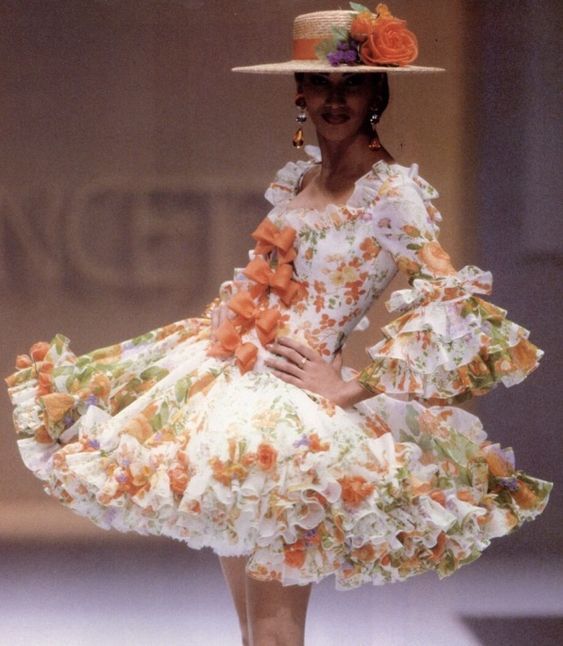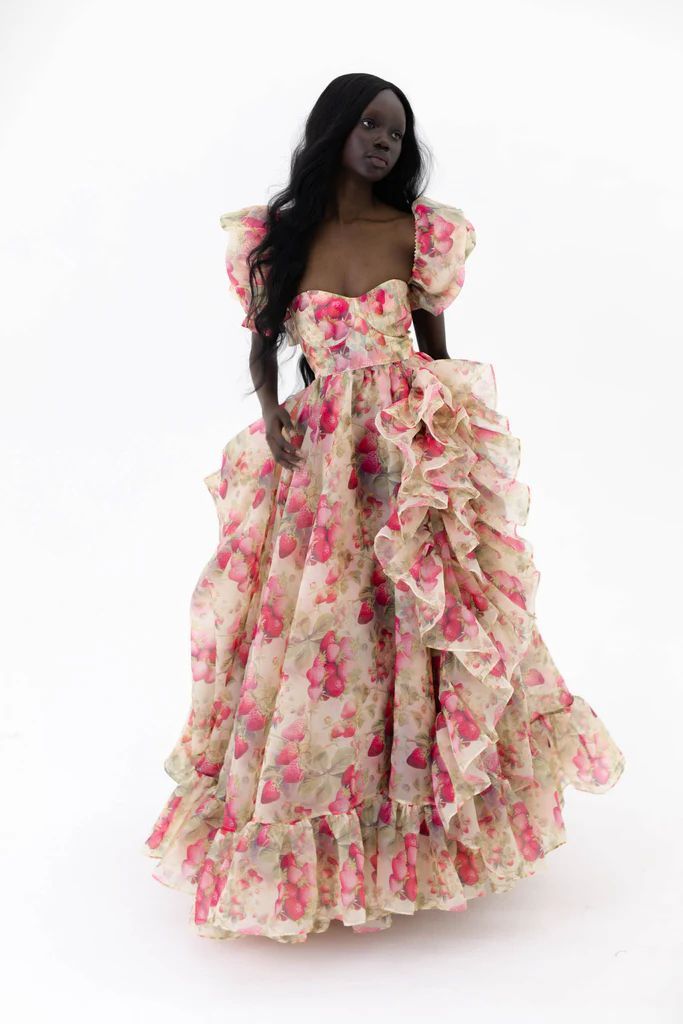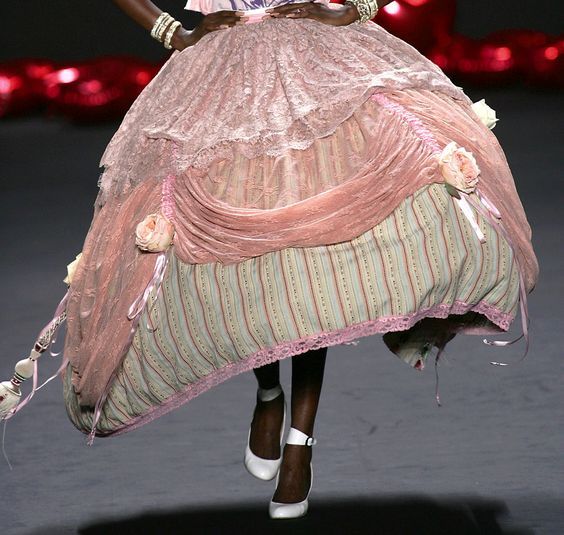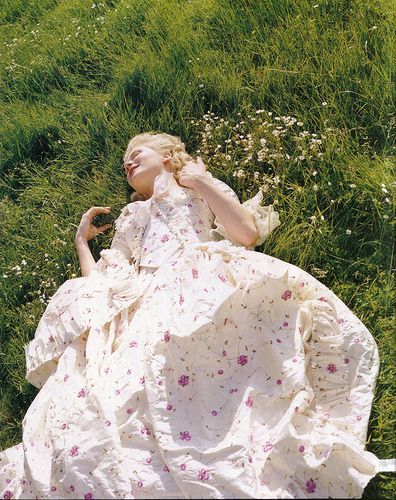
















*
Maria Theresa is astonishing in many aspects. Besides her career as an Empress she was a mother who bore sixteen children all of whom were interesting individuals themselves. This is a story about them.
Maria Theresa had sixteen children, but three of them died as infants so I’m not going to put them on the list with the others. Her first child and a daughter Maria Elisabeth died aged three, her third child Maria Carolina died aged one and finally another Maria Carolina died the same day she was born (fortunately she had been baptized and that was a great relief for Maria Theresa).
On the left: Francis I, Maria Anna and Maria Christina, in the middle: 1st row: Maria Josepha, Maria Amalia and Maria Johanna, 2nd row: Ferdinand and Maria Carolina, on the right: Joseph II, Leopold, Maria Elisabeth, Empress Maria Theresa and Charles Joseph. Note that Maria Antoinette and Maximilian Francis aren’t painted because they were born after 1754; the year this portrait was made.
1. Archduchess Maria Anna Josepha Antonia of Austria (6 October 1738 – 19 November 1789)
Maria Anna was intelligent but psychically disabled. She had a lump on her back and was of weak health; those are only one of the reasons why she was unable to find a royal husband. Quiet and introverted, she was her father’s favourite and spent her days drawing, painting and reading. Showing an interest in chemistry, physics and archeology (interests considered unsuitable for her gender) she conducted experiments in chemistry, financed archaeological exhumations, artists and scientist.
2. Joseph II. (13 March 1741 – 20 February 1790)
Joseph had a difficult relationship with his mother because their ideas and points of view always clashed. He was introverted and spent his youth withdrawn from the court, finding pleasure in reading Voltaire and Rousseau. Enlightenment ideas certainly weren’t what his mother would support. On the court of Schonbrunn you had Maria Theresa and Jesuits on one side and Joseph, a melancholic dreamer on the other side. After the death of his lovely wife Isabella, whom he loved very much (unfortunately I can’t say the same for her) he became even more depressed and sad, spending days in his chamber and finding comfort in solitude.
3. Maria Christina Johanna Josepha Antonia ”Mimi” (13 May 1742 – 24 June 1798)
Maria Christina was her mother’s favourite and they shared the same birthday. Cold and reserved, she was much disliked by her siblings, not to mention that she revealed their secrets to her mother. She was beautiful, intelligent and artistically gifted; the painting you see above is her auto portrait. Knowing how to manipulate her mother, she was the only one of all her siblings being allowed to marry whom she pleases.
4. Archduchess Maria Elisabeth Josepha of Austria (13 August 1743 – 22 September 1808)
Maria Elisabeth was the most beautiful daughter, but each beauty is short-lived, and in her twenties she survived smallpox that left her with scars. Before the disease, Liesl, as she was called, was known as a ‘coquette’ on the court; something that made her bossy mother furious. Also known for her sharp tongue, she became even more cheeky after the disease because she was vain and missed her beauty and attention it brought. Who would blame her? She never married and lived with her older sister Maria Anna.

5. Archduke Charles Joseph (1 February 1745 – 18 January 1761)
Charles was her mother’s favourite son and enjoyed her full attention and love. However, he despised his older brother Joseph and the two often conflicted with the Empress always on Charles’ side. Their feuds ended when Charles died in 1761, only two weeks away from his sixteenth birthday.
6. Maria Amalia of Austria (26 February 1746 – 18 June 1804)
Maria Amalia was beautiful, proud and charming. She excelled in music and art, but also studied history, dancing, orthography, painting, acting and a little bit of math; as her other siblings did. Aged 22 she fell in love with Charles, Duke of Zweibrucken but she was forced to marry a man she didn’t love (which was nothing unusual at that time) – Duke of Parma. Embittered by this experience, she remained estranged from her mother and even named her first daughter Caroline, not Maria Theresa as her mother wished it. Still, she was close to her sisters Maria Carolina and Marie Antoinette and exchanged letters, portraits, dresses and other gifts with them.
7. Leopold II. (5 May 1747 – 1 March 1792)
Leopold was close to his brother Joseph and they shared the same views about enlightenment. His early education for a priest turned him against the church. Although he had a mistress when he was younger, he married Maria Louisa of Spain and they had sixteen children together.

8. Archduchess Maria Johanna Gabriela Josepha Antonia (4 February 1750 – 23 December 1762)
Maria Johanna loved all her siblings but was especially close to her younger sister Maria Josepha; two girls shared tutors and chambers at Schonbrunn. Sadly, Johanna died aged twelve. After the inoculation she fell ill with smallpox; ironic? Nevertheless, in her short life she excelled at all her studies, showing particular interest in drawing, singing and acting.
9. Archduchess Maria Josepha Gabriela Johanna Antonia Anna (19 March 1751 – 15 October 1767)
Maria Josepha was a favourite of her brother Joseph who described her as “delightfully pretty, pliant by nature.” Being very close to Maria Johanna she was saddened by her early death and since then, terrified of dying of smallpox. Her worst dreams came true in October 1767; the day she was due to travel to Naples in order to marry Ferdinand (who later married her sister Caroline) she fell ill with smallpox and died aged sixteen.
10. Maria Carolina of Austria (13 August 1752 – 8 September 1814)
Maria Carolina shared the same birthday with her sister Elisabeth and is believed to have resembled her mother the most. Out of all her siblings she loved her younger sister Maria Antonia the most. Only four months away from her fourteenth birthday, she was already married to not so handsome, not so attractive and not so clean Ferdinand of Naples. Obviously Ferdinand wasted no time on Austrian court and since his bride-to-be died, he simply picked another sister. How easy.

11. Archduke Ferdinand of Austria-Este (1 June 1754 – 24 December 1806)
Ferdinand was Maria Theresa’s fourth son and fourteenth child. He married Maria Beatrice d’Este who bore him ten children. Festivals for their wedding included Mozart’s opera Ascanio in Alba.
12. Maria Antonia Josepha Johanna (2 November 1755 – 16 October 1793)
The most popular daughter of Maria Theresa (in the 18th century the same as today) was fun-loving, sparkling and artistically gifted. She loved dancing, singing and playing instruments. Described as graceful, she had both manners and appearance. Her education was quite poor, on the other hand. In May 1770. she was sent to France and married Louis (future Louis XVI.) at the age of fourteen; her husband wasn’t much older though.

13. Archduke Maximilian Francis of Austria (8 December 1756 – 26 July 1801)
As an adult he became Archbishop of Cologne and lived in Bonn. He supported musicians and artist, showing particular fondness for Beethoven.
Who is your favourite Maria Theresa’s child? I must confess that, apart from Marie Antoinette whom I simply adore, I’m fond of Joseph II and Maria Amalia. Also, Maria Josepha’s destiny makes me sad, but my pity can’t help her now nor would it then.
I got inspired by Madame Guillotine (http://madameguillotine.org.uk/2014/04/04/packing-georgian-sleepover/) and decided to choose my own outfits for a visit to Marie Antoinette. Ladies at Versailles are very competitive and vain, and I had no other choice but to buy luxurious dresses along with finest shoes, fans and accessorize. Mon Dieu, imagine being unfashionably dressed at Versailles!
1. Outfit
First outfit is rather casual and consists of an afternoon dress with striped textil which indicates upcoming neoclassical style. Always ahead of the fashion, hey I may even set a trend among court ladies! I’d wear this beautiful silk gown decorated with flowing lace and little roses to an afternoon walk to Orangerie and Queen’s groove. Perhaps I’ll carry a parasol, one must protect oneself not only from the sun but from the sprinkling water of the fountains.
2. Outfit
The Queen is having a ball, everybody of good breeding and fortune will be there. Luckily I brought my luxurious silk evening dress with elegantly wide panniers, bows, golden details and abundance of lace. Silk itself has a sweet print to it. I just need my finest ivory fan, ruby and pearl necklace and tiny silk shoes with lilac ribbons. I may have the pleasure to dance with Count D’Artois, so it’s not a bad idea to ask Sidonie, my faithful valet, to add a little perfume to my neck.
3. Outfit
I’m so beat after the last night’s party that lasted until dawn. An afternoon walk around gardens might be refreshing. My floral patterned silk gown, blue mitts with lace ending, striped socks, bergere hat (which my good friend Georgiana Cavendish has advised me to wear) and olive green shoes will be just fine.
4. Outfit
Dinner among the Queen’s closest friend requires something more simple than for a grand soiree but still elegant. This simple creamy silk gown with floral embroidery is designed by Rose Bertin – Queen’s pet. Just look at those opulent lace ruffles and intricate detailing. Fan with golden details and a scene from Mythology, diamond and emerald earrings as an only accessorize.
5. Outfit
For another afternoon walk, simple sapphire blue dress – to suit the colour of my eyes. Everybody praised my robe d’Anglais, particularly its wonderful shade of blue. Three quarter length sleeves, lace fichu and a belt are highly desirable these days. Silk shoes in matching colour and a reticule.
6. Outfit
Last evening of my visit must be spent in a very fashionable silk dress with gorgeous embroidery. Silk fabric itself has a print of flower bouquets, how perfectly suitable for spring? Diamond necklace and earrings, again with a motive of flowers. Could I have chosen a better pair of shoes than these splendid light blue silk ones? Ah, my visit was short but in style.
18th century fashion is full of lovely excesses; lots of jewellery, huge dresses, feathers, silk, brocade, flowers, pearls and other decorations; basically everything you can possibly imagine incorporated into amazing dresses and hairstyles. Hairstyles of 1770s are something most amazing I’ve ever seen in the world of hairstyles, such daring and originality hasn’t ever been seen before. Another plus is that these hairstyles were favoured by Marie Antoinette. I can’t help myself imagining her wearing these bonnets and hairstyles .
Row 1: Chapeau en berceau d’Amour orné de fleurs, et d’une barriere liséreé de tigre, Coëffure en Herisson surmonteé de plumes et de fleurs et ceinte d’une barriere de perles avec un gland
Row 2: Bonnet demi négligé avec deux barbes attachées par derriere, Pouf asiatique avec un fichu à trois pointes
I love the hairstyle in row one on the right the most! Lovely pink tassels and feathers, string of pearls, little yellow and pink rose with leaves; so elegant and cute. And the lady even has a bouquet of pink roses on her bosom. I also like the hat on the left; so enormous and over decorated and the dress and necklace seem interesting too.
Row 1: Nouvelle Coëffure dite la Frégate la Junon, Hérisson d’un nouveau gout orné de plumes fleurs et rubans avec des glands
Row 2: Chignon en Croix de Chevalier surmonté d’un Bonnet au fichu bordé de perles, Chignon noué en trois parts, surmonté d’un Bonnet au fichu
From this fashion plate I would have to choose the hairstyle from row one on the right. I mean, just look at those wide ribbons decorated with tassels and diamond decorations, huge feathers, big roses… Everything is so enormous but amazing.
Row 1: Coeffure a l’Irlandoise avec des fleurs, Bonnet aux Berceaux d’amour
Row 2: Coeffure en fleurs mélées dans les cheveux, Bonnet au fichu attaché par devant
These four hairstyles are quite romantic and sweet; perfect for spring. I can’t even choose the favourite one. Hairstyles in row one feature pink ribbons, lace trimming, pink roses with little leaves and daisies. Hairstyle in row 2 on the left is very ‘simple’; wreath of flowers, roses and little green leaves are its main decoration.
Row 1: Bonnet d’un gout nouveau et élégant avec des perles, Nouveau Bonnet a la Draperie avec deux rangs de grosses perles
Row 2: Petit Maître avec un Chapeau a la Suisse et un gillet à la Turque, Chignon à deux tresses accompagné de 4 boucles de côté à la Chanceliere
I simply could resist hairstyles in row one. They’re enormous, almost triangle shaped. You can see that colourful flowers, white kerchief and pearls were all the rage. Pearls and roses are bigger than ever before. Hairstyle on the left is even more elaborate; the top is entirely covered with decorations.
Row 1: Chapeau Anglais, le Pouf à la puce
Row 2: Bonnet au Chapeau galant, Bonnet anglo-américain
These hairstyles, on the other hand, are rather playful and funny. Second hairstyle shows slight Turkish influence and I think it’s my favourite out of them all. The third hairstyle is almost absurd; there’s a hat placed on a hairstyle, crazy but fully embodies the eighteenth century spirit. The last hairstyle is so enormous I almost can’t believe somebody wore that.
Row 1: Nouvelle Coeffure en plumes, Coeffure de la Reine
Row 2: Bonnet au fichu, Bonnet aux Aigrettes
First two hairstyle are really a 1770s classic and that’s why they are my favourite; these hairstyles can be seen on many French royal portraits of the time; Marie Antoinette’s coronation portrait and Marie Therese de Savoie’s portrait in 1775. These hairstyles are elegant and not too much daring or too big so even the least fashionable women could be wearing them.
Row 1: Baigneuse, Bonnet dun nouveau gout
Row 2: Chapeau d’un nouveau gout, Bonnet au mystere ou Chien Couchant
Row 1: Bonnet à la Victoire, la Candeur
Row 2: Bonnet au Levant, le Parterre galant
The last hairstyle is obviously the most opulent and most luxurious out of all. I don’t even believe somebody could actually wear this, I suppose, very heavy hairstyle. But all in the name of fashion, I suppose. But what a great idea, when you think about it? It seems like the politics can have influence on fashion.
Everybody know that Marie Antoinette was the Queen of France and Austrian Archduchess by birth, but she wasn’t the first Austrian Archduchess married in France. That’s what people don’t really know about, so I wanted to write something about it.
Elisabeth of Austria, Queen of France
Elisabeth of Austria (5 July 1554 – 22 January 1592) was the daughter of Maximilian II, Holy Roman Emperor and Maria of Spain. As part of the House of Habsburg, she was an Archduchess of Austria. She was pious and multilingual and spoke Spanish, German, Latin and Italian fluently and only had troubles learning French. She married Charles IX. of France in 1570. and had one child with him, a daughter Marie Elisabeth of Valois.
Anna of Austria
Anna of Austria (22 September 1601 – 20 January 1666) held the titles Infanta of Portugal and Spain and Archduchess of Austria. She was indeed born in Spain and her father was Philip III. of Spain but she belonged to House of Habsburg and that’s where the title Archduchess of Austria comes from. She married Louis XIII. in 1615. and became Queen of France.
Maria Theresa of Spain
Maria Theresa of Spain (10 September 1638 – 30 July 1683) was the daughter of Philip IV. of Spain and Elisabeth of France. As a member of the House of Habsburg she was entitled to use the title Archduchess of Austria. She married her cousin Louis XIV, The Sun King in 1660.
Marie Antoinette
Marie Antoinette (2. November 1755. – 16. October 1793.) was the last Queen of France. She was a daughter of Empress Maria Theresa and Francis I. As a member of the House of Habsburg-Lorraine she used the title Archduchess of Austria. Marie Antoinette and Louis XVI. marrie in 1770. and had four children.
Marie Louise of Austria
Marie Louise of Austria (12 December 1791 – 17 December 1847), Empress of the French and later Duchess of Parma. She was a daughter of Francis II, Holy Roman Emperor and his wife Maria Teresa of Naples and Sicily. She was part of the House of Habsburg-Lorraine and her grandfather was Leopold II, Holy Roman Emperor; Empress Maria Theresa’s son. Marie Louise married Napoleon I. in April 1810. and became Empress of the French.